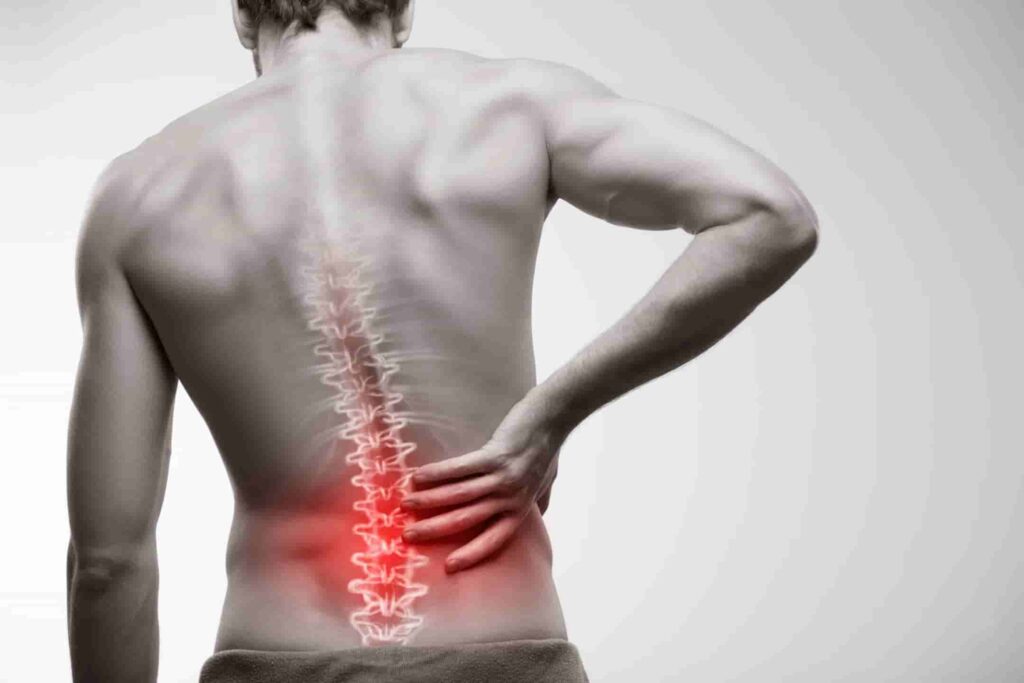Exploring the Therapeutic Potential of Medical Cannabis in Managing Low Back Syndrome
Low back syndrome, characterized by chronic pain and discomfort in the lumbar region, affects millions of people worldwide, impacting their daily lives and overall well-being. Traditional approaches to managing low back syndrome often involve a combination of physical therapy, pain medications, and lifestyle modifications. However, in recent years, there has been growing interest in the therapeutic potential of medical cannabis as an alternative or complementary treatment for this debilitating condition. This article explores the role of medical cannabis in managing low back syndrome, examining its potential benefits, risks, and the current state of research in this evolving field.
Understanding Low Back Syndrome:
Low back syndrome encompasses a spectrum of conditions affecting the lower back, including but not limited to herniated discs, sciatica, muscle strain, and degenerative disc disease. Chronic low back pain can significantly impact an individual’s quality of life, limiting their mobility and functionality. Conventional treatments often focus on alleviating symptoms, such as pain and inflammation, and improving the patient’s ability to perform daily activities. However, these treatments may not be effective for everyone, leading many to seek alternative approaches, including medical cannabis.
The Endocannabinoid System and Pain Regulation:
To understand the potential benefits of medical cannabis in managing low back syndrome, it is crucial to explore the endocannabinoid system (ECS). The ECS plays a fundamental role in regulating various physiological processes, including pain perception, inflammation, and immune response. It consists of cannabinoid receptors (CB1 and CB2), endocannabinoids (anandamide and 2-AG), and enzymes responsible for their synthesis and degradation.
Cannabinoids, the active compounds in cannabis, interact with the ECS, modulating its activity and influencing the body’s response to pain and inflammation. Tetrahydrocannabinol (THC) and cannabidiol (CBD) are two well-known cannabinoids, each with distinct pharmacological effects. While THC is primarily associated with the psychoactive properties of cannabis, CBD is non-psychoactive and has gained attention for its potential therapeutic benefits.
The Role of Cannabinoids in Pain Management:
Research suggests that cannabinoids, particularly THC and CBD, may offer pain-relieving properties by interacting with the ECS. Studies have shown that cannabinoids can modulate pain signaling pathways, reduce inflammation, and enhance the analgesic effects of other pain medications. In the context of low back syndrome, these properties make medical cannabis an intriguing candidate for pain management.
One of the challenges in studying the effects of medical cannabis is the variability in cannabinoid content and ratios among different strains. Additionally, individual responses to cannabinoids can vary, making it essential to consider personalized treatment plans. Despite these challenges, there is a growing body of evidence supporting the use of medical cannabis in chronic pain conditions, including those affecting the lower back.
Clinical Evidence and Patient Experiences:
Several clinical studies have explored the use of medical cannabis in chronic pain conditions, and some have specifically investigated its efficacy in managing low back pain. While the results are promising, it’s important to note that more research is needed to establish clear guidelines for dosage, administration, and long-term safety.
Patient experiences and anecdotal evidence also contribute to the conversation surrounding medical cannabis and low back syndrome. Many individuals report significant improvements in pain levels, sleep quality, and overall well-being after incorporating medical cannabis into their treatment regimen. However, individual responses can vary, and not everyone experiences the same benefits.
Considerations and Risks:
Before considering medical cannabis for low back syndrome, patients and healthcare providers must carefully weigh the potential benefits against the risks. While cannabis is generally well-tolerated, it can have side effects such as dizziness, fatigue, and cognitive impairment. Long-term use may also be associated with psychological dependence.
Moreover, the legal status of medical cannabis varies globally and within different regions, impacting accessibility and prescription practices. Patients should consult with their healthcare providers to ensure compliance with local regulations and to discuss potential drug interactions with other medications they may be taking.
Future Directions and Research:
As the landscape of medical cannabis continues to evolve, ongoing research is crucial for elucidating its specific mechanisms of action and refining its therapeutic applications. The development of standardized formulations, rigorous clinical trials, and comprehensive safety assessments will contribute to a more evidence-based approach to incorporating medical cannabis into the management of low back syndrome.
Conclusion:
Medical cannabis represents a potentially valuable addition to the armamentarium of treatments for low back syndrome. Its interaction with the endocannabinoid system and the modulation of pain and inflammation pathways make it an intriguing option for individuals seeking alternatives to conventional therapies. However, the complex nature of cannabinoids, the lack of standardized formulations, and the need for further research necessitate a cautious and informed approach.
Patients considering medical cannabis for low back syndrome should engage in open and transparent discussions with their healthcare providers, weighing the potential benefits and risks based on their individual health profile. As research progresses, the hope is that medical cannabis will play an increasingly well-defined role in the comprehensive and personalized management of chronic low back pain.

Dr. Nicholas Marsh has been a respected board-certified anesthesiologist in Northern Virginia for over 35 years. Recognized as a top doctor by FindaTopDoc.com, his vision for providing top-quality medical services is driven by his passion for patient comfort and dignity.

